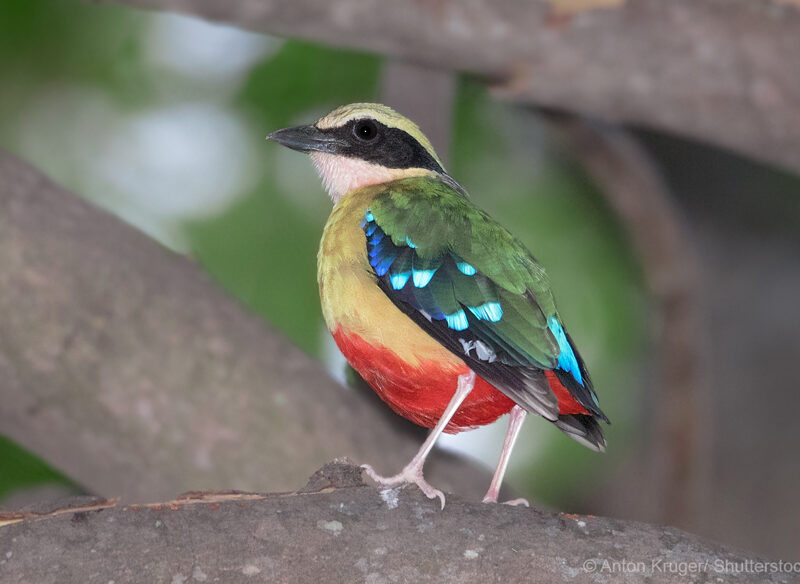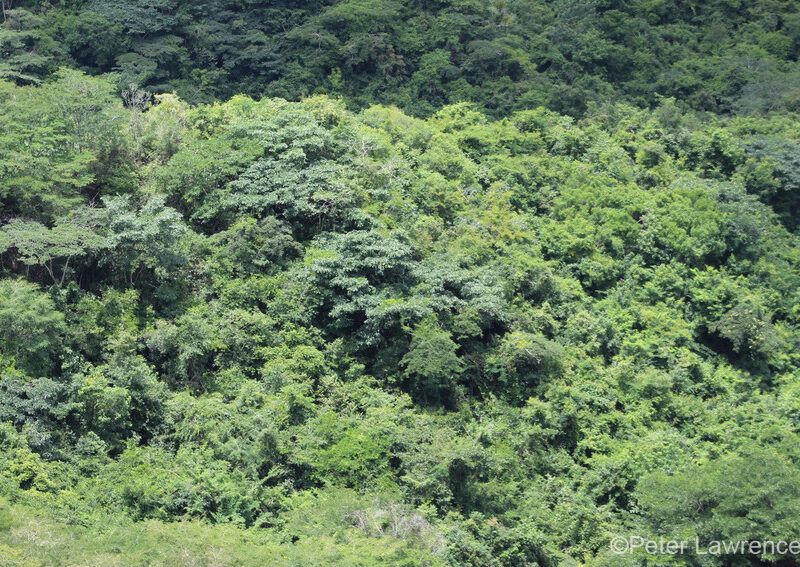African Pitta
Species Data
Class: Aves
Order: Passeriformes
Family: Pittidae
Scientific Name: Pitta angolensis
IUCN Red List status: Least Concern
Description
Although the African Pitta has bold vibrant coloured plumage it is a highly elusive species and very difficult to see in dark and often dense thickets and forest floors.
Both male and female plumage is striking and consists of an olive green back, mustard yellow breast, with a bright red coloured undertail and turquoise coloration on the tips of the tail and wing feathers. Their face markings are striking, consisting of yellow feathers and a thick solid black band covering the eye and ear coverts. Juveniles are similar in appearance but have duller colouration.
Behaviour
African Pitta’s are an extremely elusive species, given their preference for dense undergrowth habitats but also their shyness and propensity to hide. The African Pitta often remains motionless for long periods of time, then forages for invertebrates in quick bursts.
The African Pitta are is extremely territorial, birds will defend both breeding and foraging sites using explosive calls.
During the breeding season, dome-shaped nests are made from undergrowth materials high up within the upper branches of thorny tree species. A side entrance is created to enter and exit the nest, with a landing platform sometimes also being made.
Courtship displays consist of males bouncing in a dance-like display to attract females. On average, three eggs are laid between November and January – hatched chicks do not call for food but wait quietly and patiently.


Habitat
The African Pitta prefers areas of dense undergrowth within forests and thickets, often on the banks of streams and rivers.
The location of the African Pitta changes with migration: between November and December these birds arrive to breeding sites within southern and south-central Africa, returning between April and October to non-breeding sites on coastal zones the west-central coast of Africa.
The western race of the African Pitta is a resident species within it’s range in western and west-central Africa. The eastern race is migratory, breeding from central Mozambique and into southern Tanazania and wintering further north in Uganda, Kenya and northern Tanzania.
Threats and Conservation
Deforestation and clearance of undergrowth due to agricultural expansion are threats to western and eastern populations of this species.
The population is believed to be declining, but due to the widespread range of the species, the IUCN currently classifies it as Least Concern.
Starting in 2021 and with support from WLT, Tanzanian conservation body TFCG will create 10 reserves to protect a stretch of coastal forests in the Lindi District, southeastern Tanzania, that is a known home of African Pitta.
